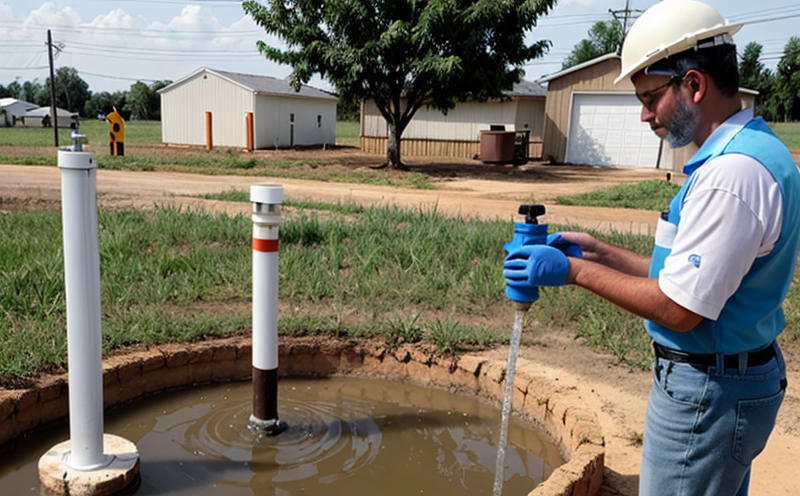ISO 5667-11 Groundwater Sampling Testing
The ISO 5667-11 standard is a pivotal framework in groundwater testing, ensuring the accuracy and integrity of samples taken from beneath the earth's surface. This method is critical for assessing the quality of groundwater resources that are essential to both natural ecosystems and human consumption. Groundwater serves as a vital resource for drinking water, agriculture, and industrial processes, making its quality assessment paramount.
Groundwater sampling involves the extraction of a representative portion from an aquifer or confined water body using appropriate equipment designed to avoid contamination. The process requires stringent adherence to protocols to ensure that the sample accurately reflects the characteristics of the entire groundwater body. ISO 5667-11 outlines the procedures for the collection and preservation of groundwater samples, which include:
- Proper selection of sampling points
- Use of suitable sampling equipment
- Preparation of the sampling site to prevent contamination
- Collection techniques that minimize disturbance and contamination
The standard is particularly important for regulatory compliance, ensuring that samples meet legal requirements set by environmental agencies. ISO 5667-11 emphasizes the use of calibrated equipment and trained personnel to ensure reliable results.
The testing process encompasses a series of steps to prepare the sample before analysis. This involves:
- Identifying the correct depth for sampling
- Selecting appropriate containers for storage
- Recording all relevant metadata including location, time, and temperature
- Transporting samples under controlled conditions to prevent degradation
The standard is widely recognized in the water sector due to its comprehensive approach. It ensures that groundwater testing results are reliable and can be compared across different regions and laboratories.
Applied Standards
| Standard | Description |
|---|---|
| ISO 5667-11:2018 | Sampling of groundwater for chemical, physical and microbiological analysis. |
| ASTM D4449 | Standard Practice for the Collection of Borehole or Well Samples for Ground-Water Hydraulics Studies. |
Scope and Methodology
The scope of ISO 5667-11 is to provide guidelines for the collection, preservation, and handling of groundwater samples. This includes:
- Sampling strategies for different types of aquifers
- Preservation methods for various chemical parameters
- Handling procedures to prevent contamination
- Data recording protocols
| Methodology Step | Description |
|---|---|
| Sampling Design | Determine the appropriate sampling locations based on hydrogeological data. |
| Sample Collection | Use sterile techniques to extract samples without introducing contaminants. |
| Preservation | Add preservatives and cool the sample immediately after collection. |
| Data Documentation | Record all metadata necessary for accurate analysis. |
Customer Impact and Satisfaction
- Ensures regulatory compliance with local and international standards
- Aids in the identification of potential water quality issues early
- Improves trust between stakeholders through reliable data
- Facilitates informed decision-making for resource management





